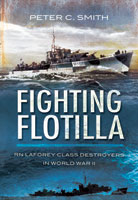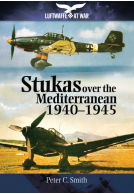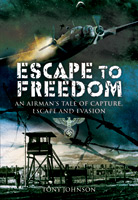Combat Biplanes of World War II (Hardback)
Imprint: Pen & Sword Military
Pages: 304
ISBN: 9781783400546
Published: 28th September 2015
(click here for international delivery rates)
Need a currency converter? Check XE.com for live rates
| Other formats available - Buy the Hardback and get the eBook for free! | Price |
|---|---|
| Combat Biplanes of World War II ePub (15.1 MB) Add to Basket | £6.99 |
The era of the combat biplane is usually thought to have been between 1914 and 1938. By the outbreak of World War II, most of the advanced air forces of the world had moved on to monoplane aircraft for their front-line battle forces, both in bomber and fighter capacities. Yet despite this, many biplanes did still survive, both in front-line service and in numerous subsidiary roles, and not just as training machines but as fully operational warplanes. Thus in 1939 the majority of major European powers still retained some, albeit few, biplane aircraft. Sadly, and as an indictment of failed British Government defence policies, it was Great Britain who still had the bulk of such obsolescent combat aircraft, machines like the Gladiator, Swordfish, Walrus, Vildebeeste and Audax for example, while the inferior Albacore, meant to replace the Swordfish, was still yet to enter service!
Germany had relegated most of her biplane designs to secondary roles, but they still managed to conduct missions in which biplanes like the He.50, He.51 and Hs.120 excelled. Both France and Italy had biplanes in active service, Mussolini's Regia Aeronautica attaching great importance to the type as a fighter aircraft as late as 1941, while the Soviet Union also retained some machines like the Po-2 in front-line service right through the war and beyond. In addition, a whole range of smaller nations utilised biplanes built for larger combatants in their own air forces. By the time Japan and the United States entered the war two years later, they had mainly rid themselves of biplanes but, even here, a few specialised types lingered on. This book describes a selection of these gallant old warriors of all nations. They represent the author's own personal selection from a surprisingly large range of aircraft that, despite all predictions, fought hard and well in World War II.
Reviewed Fliegerblatt Magazine
Fliegerblatt
In a conflict that introduced operational turbojet propulsion, ballistic missiles and nuclear weaponry, Pen & Sword offers intriguing accounts of aerial anachronisms.
Cybermodeler Online - David L. Veres
And the title tells it all.
Combat Biplanes of World War II methodically outlines the employment of the world’s last two-wing warplanes in 324 fun-filled pages...
... Smith’s admirably annotated and indexed effort proved highly informative – and thoroughly entertaining. I loved it.
Robustly recommended!
This book is a rare, well written treat that delves deeply into a period that has been long overshadowed by World War II. It is highly recommended for anyone with a broad interest in military biplanes of the 20th century.
Indy Squadron Dispatch
About Peter C Smith
PETER CHARLES HORSTEAD SMITH was born in Norfolk in 1940. After living in London, Kent and Cambridge he and his wife Pat settled in the small Bedfordshire village of Riseley in 1982 where they currently still reside. Peter is a Member of The Society of Authors, London, and has worked as both a book and a magazine editor but has been a full-time historian and author since 1968. Peter is best known for his eighty-six meticulously researched factual history books on aviation, military and naval topics.Details of all Peter's books are to be found at: www.dive-bombers.co.uk






















